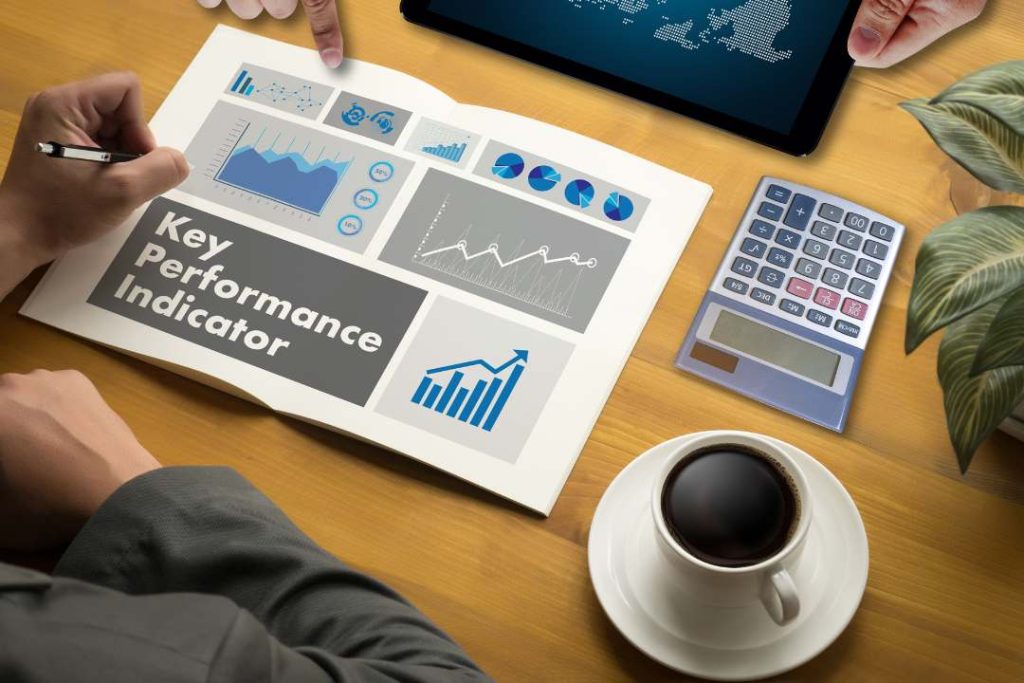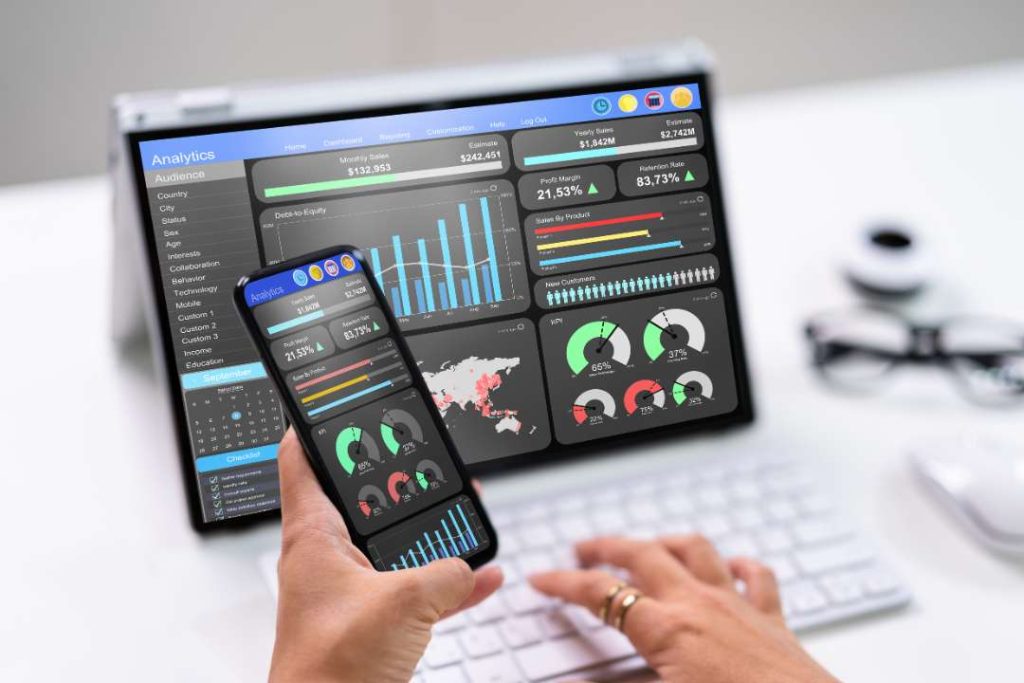What are the key performance indicators in an ecommerce?
In the ecommerce environment, knowing and measuring key performance indicators (KPIs) is essential to evaluate the performance of an online store. These key indicators allow ecommerce owners to understand the success of their strategies and make data-driven decisions. In this article, we will explain the main KPIs that every ecommerce should monitor to ensure its growth and continuous optimization.

Conversion rate
Conversion rate is one of the most important KPIs in any ecommerce. This indicator measures the percentage of visitors who complete a desired action, such as making a purchase or subscribing to a newsletter. To calculate it, simply divide the number of conversions by the total number of visitors and multiply by 100. A low conversion rate can signal problems with the usability of the site, the checkout process or the quality of the traffic coming to the page.
Average Order Value (AOV)
Average Order Value or AOV is another essential key performance indicator. This KPI indicates how much, on average, a customer spends on each transaction. Increasing this value can have a positive impact on revenue without the need to drive more traffic to the store. Some strategies to increase AOV include offering complementary products or creating promotional packs.


Cart abandonment rate
Cart abandonment rate is one of the most revealing indicators of user behavior. This KPI shows the percentage of users who add products to the cart but do not complete the purchase. If this rate is high, it could suggest that there are barriers in the checkout process, unexpected additional costs or trust issues. Optimizing the checkout process and offering flexible payment options are ways to reduce cart abandonment.
Return on investment (ROI)
ROI is a crucial KPI that measures the profitability of marketing and advertising strategies. This indicator compares the revenue generated by a campaign with the investment cost, providing a clear view of whether the actions taken are profitable or not. To calculate ROI, the formula is used: (Revenues – Costs) / Costs x 100.
Un buen manejo de este KPI permite ajustar las inversiones en función de los canales que ofrecen mayor retorno.
Customer Acquisition Cost (CAC)
Customer Acquisition Cost indicates how much it costs to attract a new customer. This is one of the most relevant key performance indicators in ecommerce, as it provides information about the efficiency of marketing campaigns. Reducing the CAC while maintaining or increasing the conversion rate is key to the long-term profitability of an online business.
Customer retention rate
It is not only important to acquire new customers, but also to retain current ones. Customer retention rate measures the percentage of repeat buyers who make a purchase in a given period of time. It is a key KPI for assessing customer loyalty and the effectiveness of loyalty strategies. Maintaining a high retention rate is more profitable than constantly acquiring new customers, which is why many ecommerce companies implement rewards programs or retention marketing.
Average time on site
The average time users spend on the site is another key KPI. A long time indicates that visitors are interested in the content and products offered. If this indicator is low, it may suggest that the site is not attractive enough or that navigation is confusing. Improving site design and providing a smooth user experience can increase dwell time and, consequently, conversions.
Bounce rate
The bounce rate measures the percentage of visitors who leave the site after viewing a single page. This KPI is crucial because a high bounce rate may suggest that the content of the page is not relevant or that there are technical problems that make navigation difficult. Reducing the bounce rate is essential to increase the likelihood of conversion and maximize ecommerce performance.
Transform your ERP into a powerful B2B ecommerce system

Stoam SaaS: The tool to maximize your ecommerce performance
Stoam SaaS is the software designed specifically for B2B e-commerce, offering advanced solutions that allow companies to efficiently manage their KPIs, from conversion rate to customer acquisition cost. With functionalities such as process automation, customer management and product catalog optimization. such as process automation, customer management and product catalog optimization.
You can integrate Stoam SaaS with various ecommerce ERPs such as Business Central, Holded and Sage 200, each tailored to different needs. Integration with Business Central allows you to automate stock management, accounting and orders, offering a real-time view. HoldedHolded, ideal for SMEs, facilitates invoicing, inventory control and order management from a simple interface. Sage 200Sage 200, designed for growing companies, synchronizes sales, inventory and customers, improving data-driven decision making.
Conclusion
Measuring and optimizing key performance indicators in an ecommerce business is vital to ensure its long-term success and sustainability. Each of these indicators provides valuable information about the performance of the online store, helping owners to identify areas for improvement and make strategic decisions based on data.
At Stoam SaaSWe understand the importance of optimizing every aspect of an ecommerce to maximize performance. Our software is designed to help online stores manage and improve their KPIs efficiently, driving business growth. For more information on how Stoam SaaS can help you, please contact us at contact us at through our website or visit our blog for more tips and resources on ecommerce management.
Share:
Related Articles

What is a marketplace? Find out how to get the most out of it
What is a marketplace? Find out how to get the most out of it In today’s digital world, marketplaces have

Business to consumer (B2C): how it works and how it differs from B2B
Business to consumer (B2C): how it works and how it differs from B2B In today’s world, e-commerce and direct business-to-consumer

Alibaba revolutionises B2B commerce with ‘Accio’ – the AI-powered search engine for SMEs
Alibaba revolutionises B2B commerce with ‘Accio’ – the AI-powered search engine for SMEs Share: Tabla de contenidos What is Accio

Examples of market segmentation: How to apply it in different sectors?
Examples of market segmentation: How to apply it in different sectors? In today’s competitive business landscape, market segmentation is more

Omni-channel strategy: How to integrate all channels to improve customer experience
Omni-channel strategy: How to integrate all channels to improve customer experience In a world where consumers use multiple channels to

What are open APIs and their role in SaaS solutions?
What are open APIs and their role in SaaS solutions? Open APIs have transformed the way businesses use software, especially

Analysis of B2B marketplaces: Are they an opportunity or a threat?
Analysis of B2B marketplaces: Are they an opportunity or a threat? B2B marketplaces are transforming the way companies buy and

How to use chatbots in B2B ecommerce to improve conversions
How to use chatbots in B2B ecommerce to improve conversions In the world of ecommerce B2B (Business to Business)shopper expectations

ERP and sustainability: How a system can reduce environmental impact
ERP and sustainability: How a system can reduce environmental impact Sustainability has become a crucial priority in today’s business landscape.
Automate orders with Stoam SaaS b2b ecommerce

